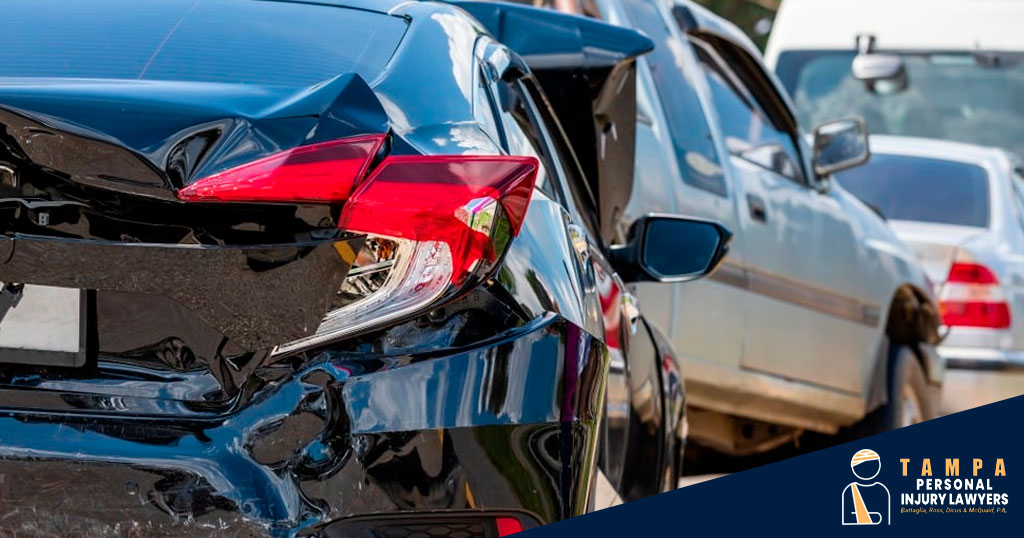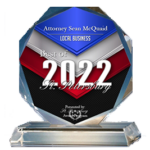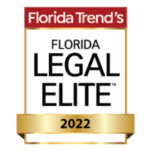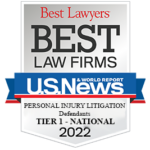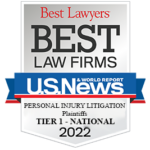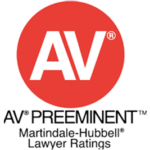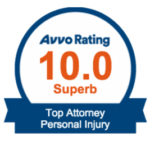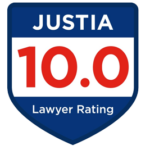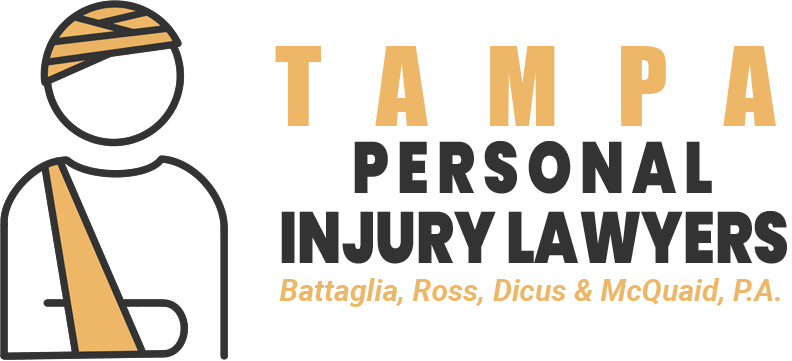Majority of the time, the rear driver is at fault for a rear-end collision, but that’s not the case 100% of the time. In this article, we’ll discuss how to determine fault in a Tampa rear-end crash and how a Tampa car accident lawyer can help you with your rear-end collision case.
If you were in a Tampa rear-end crash, you’ll want to know how fault is determined and who is at fault for your insurance claim purposes.
Table of Contents
ToggleWhat Is a Tampa Rear End Motor Vehicle Collision?
A rear-end accident is when one car hits the back of another car. However, a rear-end accident is not just limited to cars – it can involve trucks, motorcycles, and other motor vehicles. Whatever type of motor vehicle is involved, whenever one vehicle collides into the back end of another motor vehicle, that’s considered a rear end crash.
Rear-end crashes can also involve more than two cars or vehicles. Multi-car accidents, pile-up accidents, and chain reaction accidents are often a series of rear-end collisions. Rear-end accidents involving multiple vehicles are more common on highways and freeways where cars are traveling at higher speeds.
How Do You Determine Fault in a Rear-End Car Accident?
In any car accident case, negligence is the basis for determining fault; in other words, whoever was negligent, is at fault. Negligence on the road simply means that a driver or other motorist failed to use reasonable caution to avoid causing harm and injury to others.
In a rear-end accident, the rear driver may have failed to use “prudent or reasonable driving precautions” which led to them striking the back of the front car. Reasonable care can be defined as paying attention to driving with undivided attention, not engaging in risky driving behaviors to endanger others, and also using anticipation to prevent accidents (defensive driving).
The Rear Driver Is at Fault Nine Out of Ten Times
When you’re driving in Tampa, there’s a lot of traffic and varying weather conditions that require you to pay attention and stay focused on the road. Part of responsible driving includes keeping adequate distance between yourself and others drivers to prevent collisions.
As the rear driver in a fender bender they are usually at fault because they were able to see the car in front of them and had a duty of care to use caution and keep a safe distance from the other car. They should have taken “defensive” measures to prevent a collision. Had they been driving with their full attention on the road, perhaps they could have avoided a collision by stopping earlier.
How Common Are Rear-End Collisions in Tampa?
Rear -end collisions are one of the most frequently occurring accidents in Tampa and they happen just about every day. It may seem obvious that the rear driver is at fault in a fender bender, but that’s not always true.–
Rear-End Collision Statistics
According to data from the NHTSA (National High Traffic Safety Administration), nearly 87 to 88 percent of rear-end accidents are caused by a distracted driver behind the rear wheel (or failure to pay attention to the traffic in front of them). The most common distractions include:
- Texting, sending emails, or scrolling while driving
- Hand-held phone calls
- Drunk driving
- Other passengers, with young children posing the highest risk for distraction
- Being in a hurry to get somewhere
- Eating and drinking while driving
While the rear driver is usually at fault, they aren’t always the only party who could have contributed fault. Let’s go over a few different scenarios when the driver who gets hit in the back can be partially at fault for the collision.
Who Else Can Be at Fault in a Rear-End Collision Besides the Rear Driver?
Besides the rear driver, sometimes the front driver can be partially at fault. Other parties who can be potentially liable in a Tampa rear end crash include a third party (another driver, motorcyclist, truck driver, etc.), a car manufacturer, a mechanic, or a pedestrian.
Who Is Liable for My Rear-End Collision Damages?
If you find yourself with extensive damages and injuries from a rear-end collision, your attorney can help identify all liable parties and seek compensation from them accordingly. Even though the at-fault driver is responsible for causing the crash, the compensation you win may not come directly out of their pockets.
The liability may fall on your insurance company, their insurance company, an employer (if a negligent driver was on the job while they hit you), or a maintenance/mechanic company (such as a truck accident that was caused by failure to properly maintain the truck).
Examples of When the Front Driver Is at Fault for a Rear-End Collision
In some rear-end crashes, the front driver can be partly at fault for the accident. In a case where the front driver is at a complete stop (e.g., sitting at a stop light), it’s pretty obvious that the rear driver is at fault.
But what about a case where the front driver makes it hard or impossible for the rear driver to stop in time and avoid a collision? For instance, the front driver may have comparative negligence in the following scenarios:
- They stopped abruptly and slammed on their breaks without giving the person behind to stop in time
- They start to reverse towards car behind them
- The front driver has no or faulty tail lights that make it hard or impossible for the rear driver to see them
- The front driver pulls into traffic without giving a signal or too suddenly for oncoming traffic to slow down or stop and let them merge into the flow of traffic
Tampa law will assign partial, if not all, fault to the front driver in the above circumstances.
Can There Ever Be a Rear End Collision in Tampa Where None of the Drivers Are at Fault?
Interestingly enough, sometimes a rear-end collision isn’t actually anyone’s fault. There may have been nothing that either driver could have done to avoid the collision. Here are a few examples to better illustrate the concept of neither driver being at fault:
- The rear driver experienced a medical emergency while driving (the medical emergency must have been sudden, unforeseeable, and unexpected)
- The accident occurred due to a design or manufacturing defect in the rear driver’s vehicle, making it impossible for them to stop the car in time or at all (such as brake failure)
How a Tampa Car Accident Lawyer Will Help You Prove Fault in a Rear End Collision
Car accidents often come down to a matter of your word against the other party’s (unless there is video surveillance footage or some other hard evidence that clearly indicates fault). In some cases, both or all drivers agree on the sequence of events that led up to the accident. Unfortunately, there are also many times when the drivers will disagree or just have completely different recollections of how the incident occurred. What you need is a skilled Tampa car accident lawyer who can help you gather solid evidence to support your claim and prove the other party’s fault.
Here are some steps you can take to help your attorney gather evidence and build a strong case.
Gathering Evidence
You should start gathering evidence at the scene of the accident for several reasons. First off, evidence deteriorates quickly. So, by gathering evidence as soon as you can, you can preserve it and keep it safe for your personal injury claim. Examples of evidence you can gather include pictures of car damages, injuries, and any surrounding conditions that are relevant to the accident. If there is a dangerous obstacle or condition in the roadway, take pictures of that.
Also write down your recollection of the events as memories can fade quickly, especially those of traumatic incidents such as a car accident. If you’re too injured to do this, ask a passenger if they can take pictures for you. If no one you trust is around to do this for you, don’t worry. Our skilled Tampa car accident attorneys know exactly what steps to take to gather evidence that you did not or were not able to collect yourself. Once we gather enough evidence, we can start building a strategy and a solid personal injury case for you.
More specifically, here are examples of evidence to start gathering at the scene:
- Skid marks
- Pictures of damage to all vehicles involved
- Location of the vehicles after the collision
- Any debris surrounding the accident scene
- Eyewitness accounts of what happened
- Contact information of any witnesses or passerbys who saw the collision occur
The Importance of Calling Police to Respond to the Accident Scene
Having the police come to the accident scene to fill out an official report will be helpful evidence for your case as well. This is especially valuable evidence if they issued a traffic violation or citation to the other driver.
In some cases, there is not much evidence to support your claim versus the other driver’s claim. In such situations, a police accident report can serve as a reference point to get some idea of what law enforcement assessed and documented. Without this, it comes down to the credibility of each party involved and the other evidence each side can draw up to support their claims.
Hiring Other Experts and Professionals to Help Your Case
Your attorney may enlist the help of other professionals to help build a strong case with expert testimonies to support your claim. For instance, if you have injuries, we will get a medical professional to testify about the severity of your injuries. This is particularly helpful in cases of catastrophic injury and sometimes even a mental health professional can testify on how the injuries have negatively impacted your quality of life.
Other types of experts your attorney may work with on your case include private investigators and accident reconstruction specialists. An accident reconstruction specialist can help reconstruct the accident scene to simulate the accident and find out exactly how it happened and gather evidence to analyze. They are specially trained to assess evidence and make expert evaluations about what happened.
If the rear driver claims that they came to a slow and gradual stop but there are skid marks on the road to suggest they made an abrupt stop, this is evidence an accident reconstructionist is trained to look out for and use as supporting evidence. They might also use the location of the vehicles, crash damage, and where other debris and litter from the accident ended up to make conclusions about the accident.
How Do I Seek Financial Compensation After a Tampa Rear End Crash?
Your attorney will advise you on how to go about seeking compensation for all the damages you suffered in the rear-end collision. Most likely, if the accident was caused by a negligent driver, you are entitled to compensation, including:
- Medical bill coverage
- Reimbursement for lost wages if you missed work due to car accident injuries
- Any pay cuts you take from a reduced earning capacity
- Vehicle and other property damages
- Pain and suffering
- Mental and emotional distress
- Reduced quality of life
- Loss of companionship and consortium
These are only some damages that you can potentially recover for; you’ll need to consult with an attorney to get a full and comprehensive idea of all the damages you are entitled to after your accident. Every case is unique and happens differently with varying outcomes, which is why each case requires a tailored approach to assess and evaluate damages.
Contact an Experienced Tampa Personal Injury Lawyer Today
If you were injured in a Tampa rear-end accident, you need professional help to win the compensation you deserve. The negligent driver should be held accountable for causing your injuries. If we need to take your trial, we have the experience and resources needed to see your case through with a successful outcome.
Call us today for your free initial consultation.

